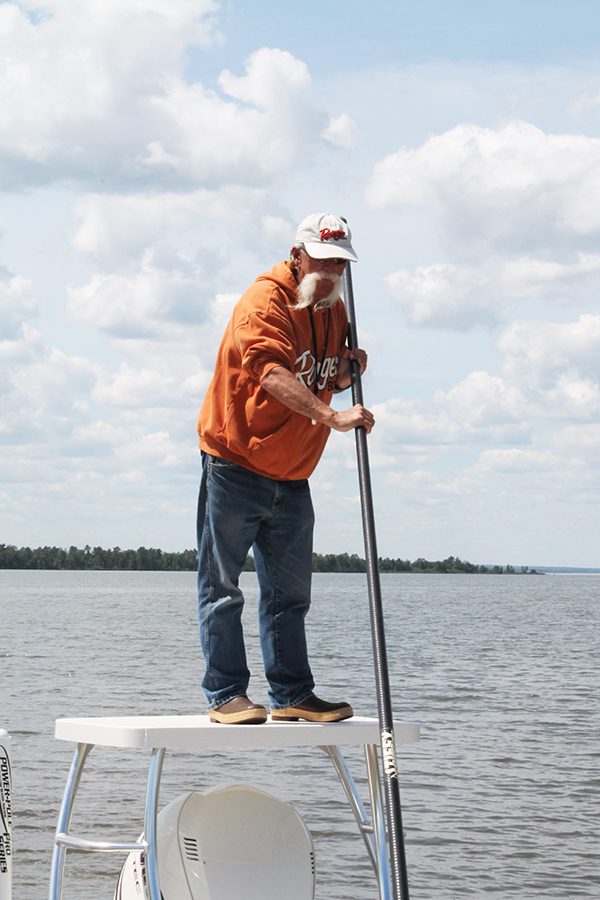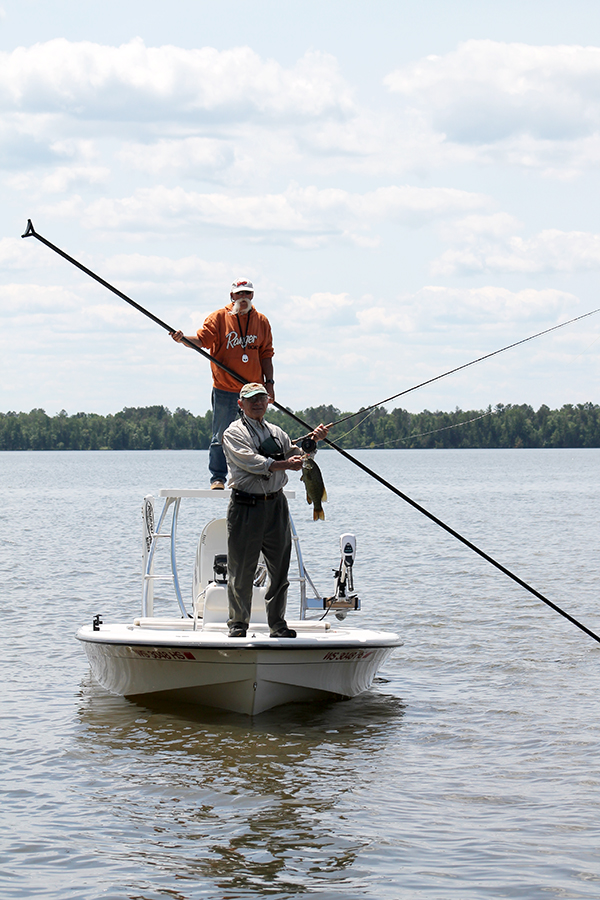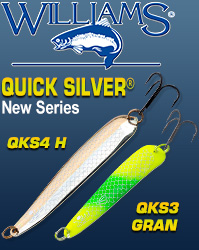Wisconsin Loses Roger LaPenter, Protector of Chequamegon Bay Smallmouth Bass
Last week, Roger LaPenter of Ashland passed peacefully with loving family by his side. According to the Ashland Press, he was born on Dec. 1, 1943. He will be dearly missed by many and is survived by his wife Carolyn Swartz and son Jake (Bridget), grandson Nels Odin, brother Tom LaPenter and nephew Justin LaPenter.
In lieu of flowers the Roger LaPenter Chequamegon Bay Fund has been established to protect Lake Superior’s Chequamegon Bay and varied resources while providing key experiences to further others appreciation of the Bay. Tax-deductible contributions can be mailed to the Roger LaPenter Chequamegon Bay Fund ℅ The Ashland Foundation PO Box 762, Ashland, WI 54806
Because I had the privilege of fishing and listening to Roger on the open water and ice of Chequamegon Bay for stories on perhaps ten occasions over 20 years, we are publishing below one column written in 2005. Roger also was on the cover of On Wisconsin Outdoors in 2015, push-poling a fly-fishing client to another strike on the Bay. I hope you get a feel for what Roger meant to the Bay and Wisconsin’s bass fishery. I hope too that you have an opportunity to catch a monster smallmouth on Chequamegon Bay, think of Roger, and release the fish to grow, and fight again.
Roger would appreciate that…..

BIGGER SMALLIES…Chequamegon Bay bass thrive on protective regulations
By Dick Ellis
Simple odds and prevailing high winds had kissed Chequamegon Bay’s shallows to a chocolate brown and blew good fishing into tomorrow. Stable weather, clear water and incredible spring and early summer fishing for the monster smallmouth bass of this 84,000 acre Wisconsin paradise had literally gone with the winds; at least for a few hours.
Despite poor water visibility July 4, Roger LaPenter armed his flyrod with a Dahlberg Diver and “a little trick” to help trigger strikes from the smallies that average 18 inches under protective regulations adopted 15 years ago. The floating fly imitating either a minnow or surface-treading mouse was sent on a sinking line to work the sand and reeds of Chequamegon.
“Even when I stop stripping line the fly keeps moving up,” LaPenter said. “I can make it do just about anything; work it on the surface like a mouse or swim it like a minnow. I let it sit, then bump it a few times to make a surface commotion especially when it’s clear. When the fly is under water it has a collar that pulls a lot of water and makes a chugging sound. When you stop the motion it still rises and if something is following it will often trigger a strike. It’s a big fly and these big fish absolutely slam it.”
During a late June trip working these shallows, the Ashland guide’s client catch had included two 20-inch smallmouth. To date in 2005 a 22 inch, seven pound bass had been caught and released by LaPenter on the flyrod, and a dozen fish in the 21 inch class taken and released by clients on a fly rod or more standard equipment.
“We’ve had clear water and an incredible spring of fishing,” he said. “Usually by the third week of June the fish start moving into deeper water. They’re harder to find but you can always find them.”
From his salt water model Cayman 19 foot Ranger featuring a high spotting platform LaPenter visually locates bass for his clients holding among the timber or weed pockets. With the 200 outboard, he covers big territory to find the roving schools in the Lake Superior Seisha current that may offer strike after strike off a breaker wall of sand point after being virtually nonexistent in the area just an hour before.
“In post-spawn the bass start getting more into a nocturnal routine,” he said. “The sun starts sinking and everything starts getting active. They school up and pack in these weed pockets to feed on minnows. In July the fish are moving into deeper water. We still fly fish but if you’re not used to throwing a sinking line that can really be a chore.”
Although it is big smallmouth that draws anglers from throughout the country to Chequamegon Bay, LaPenter was excited when two smaller bass representing a younger year class of fish hit the fly despite the dirty water. Successful spawning and new recruitment of fish is as vital to the fishery as the rules that promote big bass.
With virtually no protective regulations prior to the early 1990s, Chequamegon Bay’s trophy class smallmouth could be taken from the spawning beds and kept. Three anglers in one boat familiar with the shallow spawning territories could visually locate beds and legally take 15 prize smallmouth instinctively protecting those nests.
Under LaPenter’s lobbying, the regulations were changed to catch and release only until the third week in June, with a one fish 22-inch minimum after. LaPenter points to the regulations as the absolute reason that fish here average 18 inches, with smallmouth at 20 inches or better not uncommon.

“It’s definitely because of the regulations,” he said. “The average has been holding at 18 inches for a long time, but we’re seeing more bigger fish. There is no question that people come here from across the country and even other parts of the world because of the regulations. They know they’re going to find a quality fishing experience, they know they’re going to catch big fish and that is what they’re here for. You can’t find a parking place here in June.”
LaPenter also offered that as intrigued as anglers from other parts of the country are with Chequamegon Bay’s big bass, many local anglers believe the protective regulations enable a harmful rate of predation on other sport fish. Smallmouth co-habitating Lake Superior with other species, he said, is an age-old fact and predation of all fish species a natural occurrence. “Smallmouth are not depleting other species,” he said.
“But take the regulations off the smallmouth and this populations could be literally wiped out in two seasons,” he said. “Wisconsin is the best smallmouth bass state in the country. I’m not saying every lake in the state should be doing what we’re doing up here but these restrictions are working. You can fish for smallmouth until the ice comes in here and catch steelhead, Coho or Chinook on the same fly or minnow.”
“I’ve caught and released my two largest smallmouth that were 23-1/2 inches and 8-1/2 pounds. And I’ve seen them bigger. They don’t get that big by being stupid and they’re not found in areas where all of the other fish are. But they are here. If you let them go, they’re going to grow, and we’re the prime example of that. This is a pretty special place.”
To plan your own fabulous trip for the whole family to Ashland Wisconsin, including smallmouth bass fishing on Chequamegon Bay, connect with the Ashland Chamber of Commerce.









